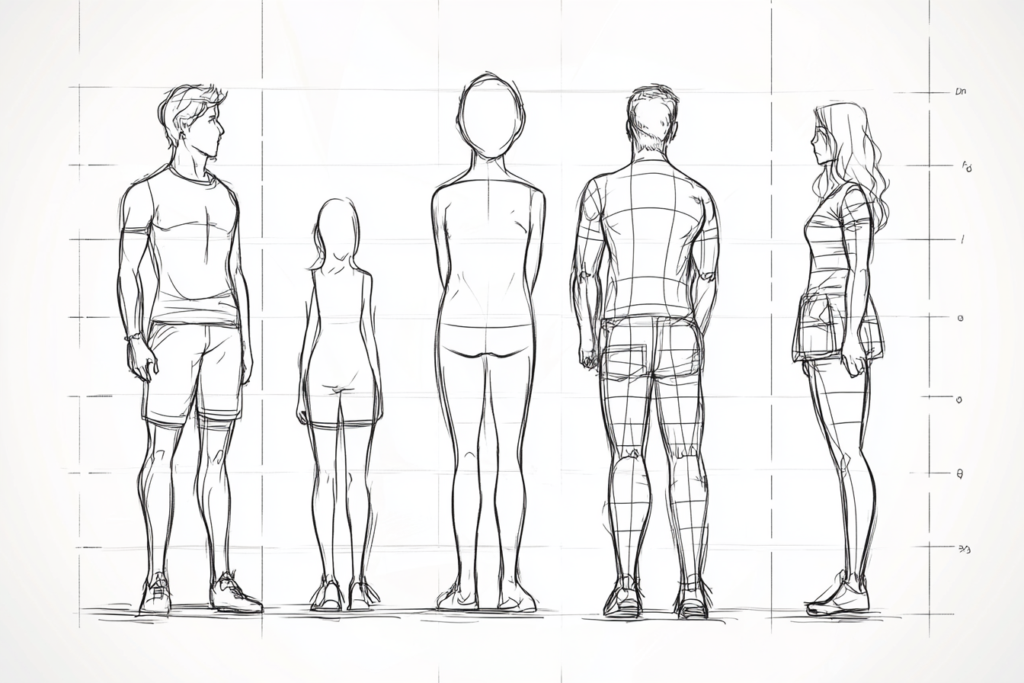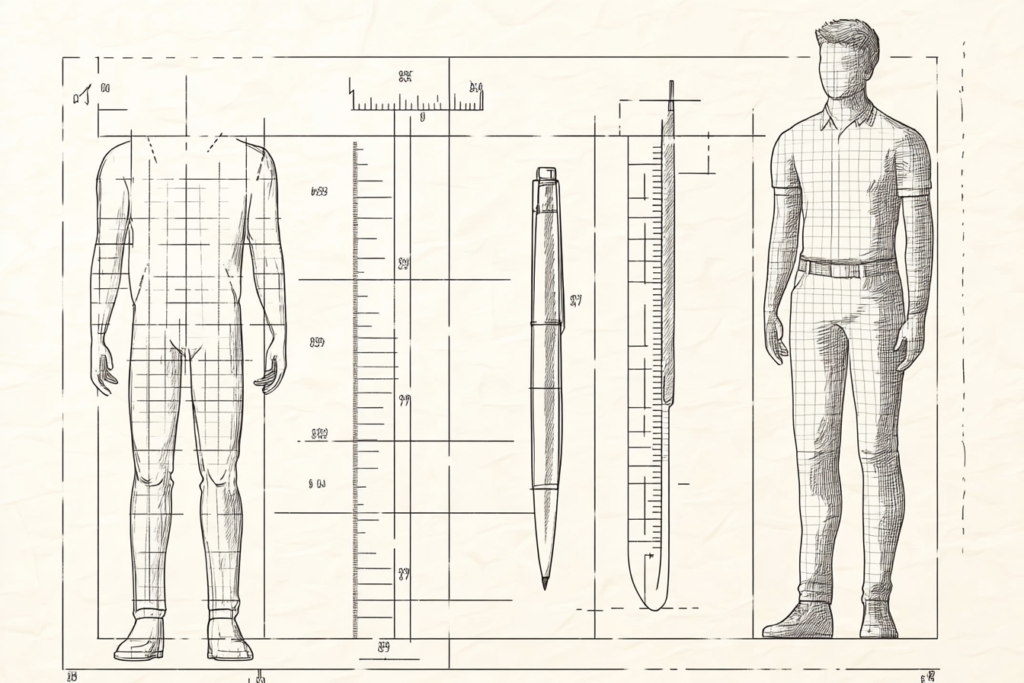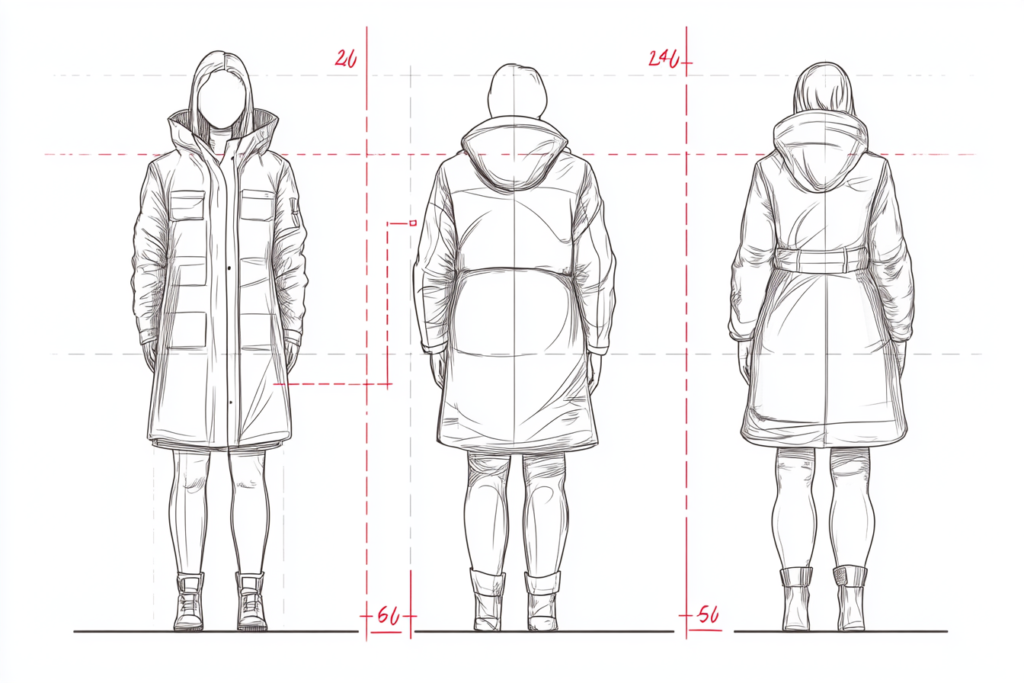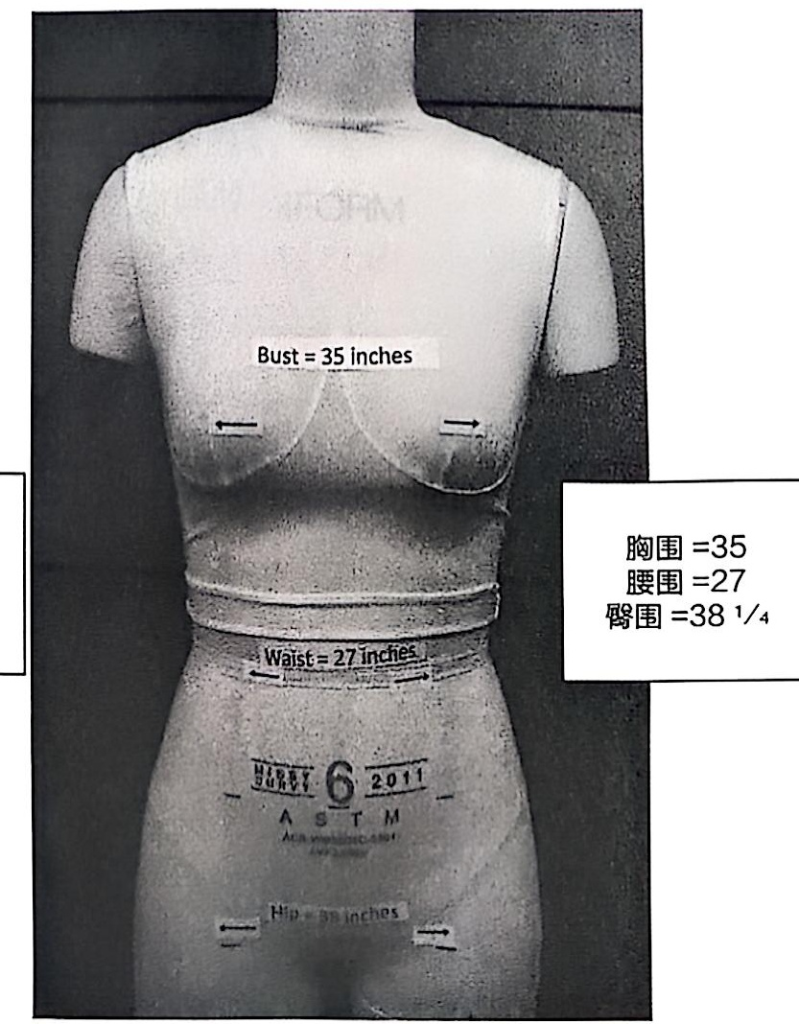When it comes to the fashion industry, body size, clothing size, and sizing standards play a crucial role in both garment design and consumer satisfaction. Accurately measuring clothing products and understanding how to communicate sizing information are essential tasks for designers, manufacturers, and retailers alike. In this article, we will cover everything you need to know about measuring clothing, understanding different clothing categories, and communicating sizing and specifications effectively to customers.



Understanding Body Size, Clothing Size, and Sizing
Body Size vs. Clothing Size
- Body Size: Body size refers to the measurements of a person’s body, such as bust, waist, hip, shoulder width, inseam, and sleeve length. These measurements are used to determine the most appropriate clothing size for an individual. Body size varies from person to person and is crucial when designing garments that fit comfortably and appropriately.
- Clothing Size: Clothing size, on the other hand, refers to standardized measurements that categorize garments into groups based on the body measurements they’re designed to fit. Sizes such as XS, S, M, L, XL (or numerical sizes like 0, 2, 4, 6) are commonly used to communicate the general fit of clothing. Clothing size is designed to make the shopping experience easier for customers by simplifying the relationship between body size and garment fit.
Both body size and clothing size are essential to the garment production and retail process, and understanding the distinction between them ensures accurate sizing throughout all stages, from design to production to final consumer use.
Details on Measuring Clothing Products
Key Measurements for Clothing Products
Measuring clothing products involves taking specific measurements of the garment to ensure it fits the intended body size and follows production specifications. Here are the key measurements for various clothing categories:
- Tops and Dresses:
- Chest/Bust: Measured around the fullest part of the bust or chest, ensuring the measurement goes over the shoulder blades.
- Waist: Measured at the narrowest part of the torso, typically above the belly button.
- Hip: Measured around the fullest part of the hips and buttocks, generally 8-9 inches below the waist.
- Length: For tops, measured from the highest point on the shoulder to the hem. For dresses, from the neckline to the hem.
- Bottoms (Pants, Skirts, Shorts):
- Waist: Measured at the natural waistline, just above the belly button.
- Hip: Measured at the fullest part of the hip, typically 8-9 inches below the waist.
- Inseam: The length from the crotch seam to the bottom hem of the pants.
- Rise: Measured from the crotch seam to the top of the waistband, indicating how high or low the pants sit on the waist.
- Outerwear (Coats, Jackets, Blazers):
- Chest: Measured across the fullest part of the chest.
- Shoulder Width: Measured from the shoulder seam to the shoulder seam across the back.
- Arm Length: Measured from the shoulder seam to the wrist, ensuring proper sleeve length.
- Jacket Length: Measured from the center back of the neck to the hem.
- Footwear:
- Length: The length of the foot from heel to toe.
- Width: The circumference of the foot at its widest point.
- Height: The height of the heel, if applicable, especially for shoes or boots.
Measuring Different Clothing Categories
Each clothing category has its own set of measurements and specifications. Here’s a breakdown of common categories and how they differ in terms of sizing and measurement practices:
- Women’s Clothing:
- Women’s clothing is usually sized by XS, S, M, L, XL or by numerical sizes (2, 4, 6, 8, etc.), but measurements can vary depending on the brand or region. Common measurements for women’s apparel include bust, waist, hip, and inseam for pants or skirts.
- Fit Type: In women’s clothing, fit types vary widely, from slim fit to loose or relaxed fit, which should be considered when determining size.
- Men’s Clothing:
- Men’s clothing is generally measured by chest, waist, and inseam for pants. Many men’s clothing sizes also follow a standardized measurement system based on chest width and waist circumference (e.g., 40R, 34W, 32L for suits or pants).
- Fit Type: For men’s clothing, sizing can also vary based on fit preferences, such as slim, regular, or relaxed fit.
- Children’s Clothing:
- For children’s clothing, sizes are usually based on age (e.g., 2T, 4T, 6, 8), though measurements like height, chest, and waist are also commonly used. Sizing for kids is particularly variable since children grow at different rates.
- Plus-Size Clothing:
- Plus-size clothing is designed for individuals who wear larger sizes than those covered by standard sizing charts. These sizes can vary, but they typically range from 14W to 24W or more, with special attention given to the fit in the bust, waist, and hips.
Clothing Production Specifications
When producing clothing, production specifications outline how the garment should be made and what the size should be based on the measurements. These specifications help manufacturers understand the designer’s requirements in terms of dimensions, fabric type, construction, and fit. Here’s an overview of what should be included in clothing production specifications:
- Garment Dimensions: Specific measurements for each size of the garment, such as bust, waist, hip, inseam, and sleeve length.
- Grading: The process of scaling the base size up or down to create other sizes while maintaining proportionality in fit.
- Pattern Making: Detailed instructions for how the patterns should be cut and sewn to match the specified measurements and the fit.
- Fabric Specifications: Information on the type of fabric, weight, color, and texture that should be used for each garment.
- Construction Methods: Clear instructions on how to assemble the garment, such as stitching type, seam allowances, and finishings.
Explaining Different Clothing Size Standards to Customers
Customers often encounter various sizing systems, especially when shopping for clothing from different brands or countries. Understanding the differences in clothing size standards can help designers and retailers effectively communicate size options to their customers.
Common Size Standards:
- US Standard: The US uses a numerical sizing system for women’s and men’s clothing. Women’s sizes usually start at 0 and can go up to 20 or higher. Men’s sizes typically refer to chest measurements (e.g., 38, 40, 42).
- European Standard: European sizes are generally higher than US sizes. Women’s sizes range from 32 to 54, while men’s sizes are denoted by chest measurements (e.g., 48, 50, 52).
- UK Standard: In the UK, women’s sizes typically range from 4 to 22, while men’s clothing sizes are generally marked by chest and waist measurements (e.g., 38, 40, 42).
- Asian Standard: Asian sizes often run smaller than European or US sizes, so it’s crucial to refer to specific size charts for garments sold in Asia.
How to Communicate Sizing to Customers:
- Size Charts: Provide clear, easy-to-read size charts on websites or in store displays. Include body measurements (e.g., bust, waist, hips, inseam) alongside corresponding garment sizes.
- Fit Descriptions: Include information on how the garment fits (e.g., slim fit, regular fit, oversized) so customers can better understand the intended silhouette.
- Conversion Guides: Offer conversion charts for different sizing systems (US, UK, EU, Asia) to help customers find their correct size.
- Customer Assistance: Encourage customers to reach out for help in determining their size if they’re unsure, particularly when purchasing online where trying on the garment isn’t possible.
Communicating Sizing and Specifications in the Process Sheet
In the garment production process, clear communication is vital. Whether in written or oral form, sizing and specifications should be communicated effectively to ensure all parties involved—designers, manufacturers, and retailers—are on the same page.
Written Communication:
The process sheet is a detailed document that outlines all the measurements, size charts, grading rules, and garment specifications. It should clearly present this information in an organized manner, with visual aids such as diagrams and technical flats. The process sheet helps avoid confusion during the manufacturing process and ensures consistent sizing in the final product.
Oral Communication:
For more immediate feedback, verbal communication during meetings or fitting sessions can be used to address sizing issues or adjustments. However, any oral communication should be followed up by written documentation to ensure clarity and consistency in the final garment production.
Conclusion
Understanding body size, clothing size, and sizing standards is essential for both designers and consumers in the fashion industry. By providing detailed measuring guidelines, clear production specifications, and educating customers on size conversions, the entire production and retail process becomes more efficient, reducing errors and improving customer satisfaction. Effective communication, whether written or oral, is key to ensuring that the right sizes are produced and that customers can easily find the right fit when shopping for clothing.

